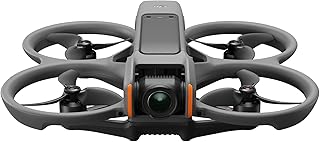Flying a DJI Drone Safely: A Comprehensive Guide
Flying a DJI drone can be incredibly fun and rewarding, but safety should always be your top priority. Here's a detailed guide to help you fly responsibly and avoid potential risks:
Before You Fly:
1. Know the Laws: Every country and region has specific regulations for drone operation.
* FAA in the US: Visit [https://www.faa.gov/uas/](https://www.faa.gov/uas/) for drone registration, licensing, and airspace restrictions.
* Other countries: Check your local aviation authority website for specific rules.
2. Register your Drone: In most countries, drone registration is mandatory. This allows authorities to identify your drone if it causes problems.
3. Plan your Flight: Choose a safe location, avoid restricted airspace, and check the weather conditions. Use apps like AirData or SkyDemon to identify no-fly zones and plan your flight path.
4. Familiarize Yourself with your Drone: Read the user manual thoroughly, practice in a safe area, and understand how to operate the drone's features.
5. Check the Battery: Ensure your battery is fully charged and in good condition. Do not fly with a low battery, as this can lead to a sudden loss of control.
6. Prepare for Emergencies: Always fly with a spare battery and know how to perform an emergency landing.
During Flight:
1. Maintain Visual Line of Sight (VLOS): Always keep your drone within visual range. Do not fly beyond the line of sight, as this can lead to loss of control and accidents.
2. Fly at Safe Altitudes: Respect airspace limitations. Never fly above 400 feet (120 meters) without proper authorization.
3. Avoid Crowded Areas: Do not fly over people, vehicles, or private property without permission.
4. Be Aware of Surroundings: Keep an eye out for obstacles, other aircraft, and wildlife.
5. Don't Fly in Bad Weather: Rain, strong winds, fog, and other weather conditions can affect drone performance and lead to crashes.
6. Be Mindful of Noise: Be respectful of others and minimize noise pollution.
7. Respect Privacy: Do not fly over private property or film people without their consent.
After Flight:
1. Inspect your Drone: Check for any damage, especially to the propellers and landing gear.
2. Store your Drone Safely: Keep your drone in a dry and safe place when not in use.
3. Review your Footage: Enjoy your amazing drone footage and share it responsibly.
Additional Tips:
* Invest in a good quality drone: A reliable drone with advanced safety features will provide you with a safer and more enjoyable flying experience.
* Join a local drone club: Connect with other drone pilots and learn from their experiences.
* Take a drone safety course: Many organizations offer drone pilot training and certification programs.
Remember, responsible drone operation starts with you. By following these guidelines, you can enjoy the thrill of flying a drone while ensuring the safety of yourself, others, and your drone.


